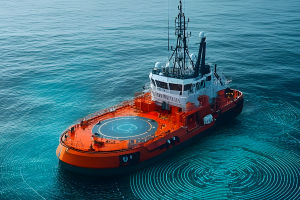Have you ever watched a robot dance and wondered how it learned those moves? It's fascinating to see machines that once only performed strict, mechanical tasks now express rhythm and style through dance.
Today, let's explore how scientists and engineers teach robots to dance and what makes this possible.
What Makes Dancing Difficult for Robots?
Dancing is more than just moving limbs. It involves timing, balance, rhythm, and sometimes even emotions. For humans, these come naturally. For robots, it's a huge challenge.
Robots don't have feelings or instincts. They rely on programming and sensors to know what to do. To dance, a robot must coordinate multiple parts precisely, keep balance on one or two legs, and adjust to music tempo. All these require advanced technology.
How Do Robots Learn Dance Moves?
Scientists use two main approaches: pre-programmed choreography and machine learning.
• Pre-programmed choreography: Engineers create a set of dance moves manually, programming each joint's position and timing. This method is like telling the robot step-by-step what to do. While this works well for simple dances, it's limited in flexibility and creativity.
• Machine learning: This is a more advanced method. Robots are "taught" to dance by showing them many examples of human dancing through videos or sensors. Using algorithms, robots learn patterns and how to move smoothly. This approach helps robots adapt to new music or styles and even improvise.
The Role of Sensors and Feedback
To dance well, robots need to know their position and surroundings. That's where sensors come in.
Robots use gyroscopes, accelerometers, and cameras to detect balance and movement. These sensors provide real-time feedback, helping the robot correct its posture and avoid falling.
Imagine a robot trying to spin. Without sensors, it might lose balance and tip over. But with feedback, it can adjust its speed and angle, just like a human dancer would.
Programming Rhythm and Timing
Music rhythm is crucial in dancing. Robots use sound sensors or connect to music software to "hear" the beat.
Scientists program the robot's movements to match music tempo by syncing motion commands with rhythm data. This synchronization is often handled by software that converts music beats into control signals.
Some advanced robots even recognize changes in tempo or style during a song, adjusting their moves dynamically to stay in sync.
Using Artificial Intelligence to Improve Dance
Artificial Intelligence (AI) helps robots improve beyond fixed routines. With AI, robots can analyze dance videos, learn new styles, and even generate original dance sequences.
For example, researchers use deep learning—a type of AI—to train robots on thousands of dance moves. The robot learns which movements flow well and creates smooth transitions, making the dance look more natural.
AI also allows robots to "watch" a human dance and imitate movements in real-time, bringing a new level of interaction between humans and machines.
Examples of Dancing Robots
Some robots have become famous for their dancing abilities:
• Boston Dynamics' Spot: This four-legged robot can perform choreographed routines with surprising agility.
• Nao Robot: Used in education and research, it can learn dance moves and perform synchronized dances with other robots.
• Sophia: Known for human-like expressions, Sophia has shown off her dancing skills at events, blending AI with performance.
These examples show how far robotics has come, turning mechanical machines into entertainers.
Why Teach Robots to Dance?
You might ask, why spend so much effort making robots dance?
Dancing robots have many benefits:
• Improving robotics technology: Dance requires precise control and balance, pushing developers to improve robots' hardware and software.
• Human-robot interaction: Dance makes robots more relatable and fun, helping people feel comfortable around them.
• Entertainment and education: Dancing robots appear in shows and classrooms, making learning about science exciting.
So, next time you see a robot dancing, remember all the science, sensors, and smart coding behind those smooth moves. Isn't it amazing how machines can learn to groove just like us? Have you ever watched a robot dance live or online? What did you think? Share your thoughts and let's talk about the future of dancing robots!


